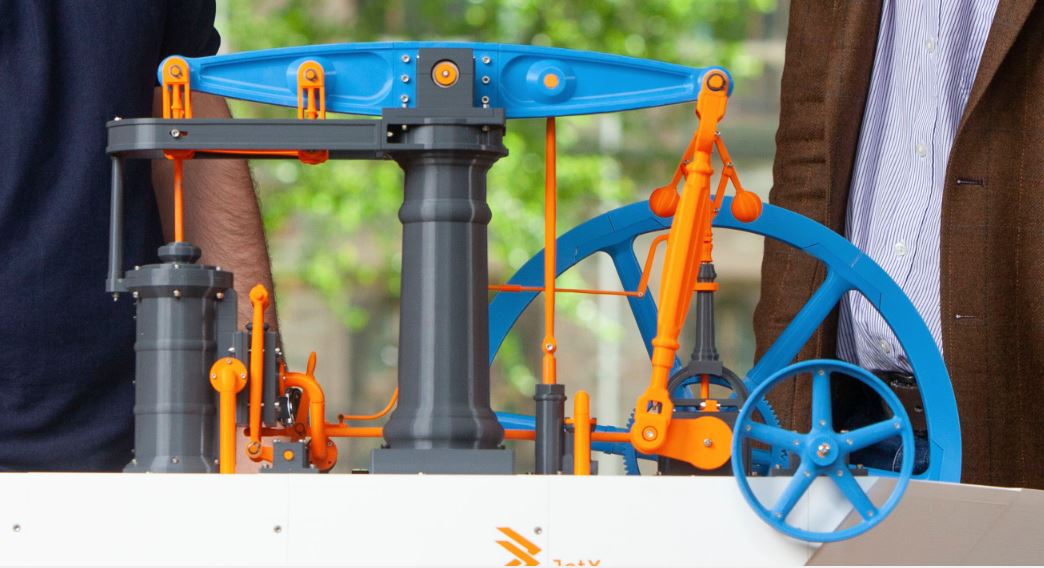A team of University of Glasgow students have 3D printed a scale model of James Watt’s pioneering Boulton-Watt steam engine, marking the bicentenary of his death.
Constructed over five months by members of the School of Engineering’s JetX student society, the model is believed to be the largest additively manufactured working model of this design ever made.
A 3D printed tribute to James Watt
James Watt created his revolutionary steam engine in 1765 while working as an instrument-maker at the University of Glasgow. There he began making improvements to a Newcomen steam engine discovering that he could make it vastly more efficient by adding a separate condenser. His work led to the creation of the world’s first practical steam engine, helping kick start the industrial revolution.
To commemorate Watt’s death 200 years ago the JetX society decided to employ its engineering and 3D printing expertise to produce a scale model of his famous design.
The model engine is about a metre in length and uses more than 150 3D printed parts. The process took 845 hours of printing in total, consuming more than 2.2km of printing filament. While the original was run on steam, the 3D printed model uses an additional gear to move itself and demonstrate the engine’s range of motion at the touch of a button.

3D printing working models
The JetX Engineering society is a club for jet engine enthusiasts, and provides engineering students with the chance to design, develop and build models of the types of engines used in the modern aerospace industry.
Since the society was established in 2014, its members have successfully used 3D printing to create two sub-scale jet engine models, including the X-Plorer 1, which required 2,901 hours of 3D printing.
Chris Triantafyllou, president of JetX, led the design and construction of the recent Watt engine model.The past five months have been very busy,” Triantafyllou said, “but we’re really pleased with the final model.”
“The whole building process utilised a lot of design and prototyping practices we’ve learned throughout the years of developing jet engine models.”

The model will be on display at Glasgow University Library from Thursday 6 June as part of a public exhibition which explores Watt’s life, achievements and legacy. Colin McInnes, the University’s James Watt Chair and Professor of Engineering Science, said, “The JetX team have achieved something remarkable with the construction of this model, which is a fitting tribute to the vision of James Watt in this bicentenary year.”
“The engine is stunning, and credit to JetX for their imagination, dedication and diligence, not just in this project but also in their self-directed jet engine designs. The School of Engineering is keen to instil in students the importance of creative thinking in engineering, and JetX are a prime example of how creativity can inspire exciting new projects.”
Subscribe to the 3D Printing Industry newsletter and follow us Facebook and Twitter for the latest news in additive manufacturing.
Visit our 3D Printing Jobs board to find new opportunities in your industry.
Featured image shows The 3D printed model of the Boulton-Watt steam engine. Photo via the University of Glasgow



